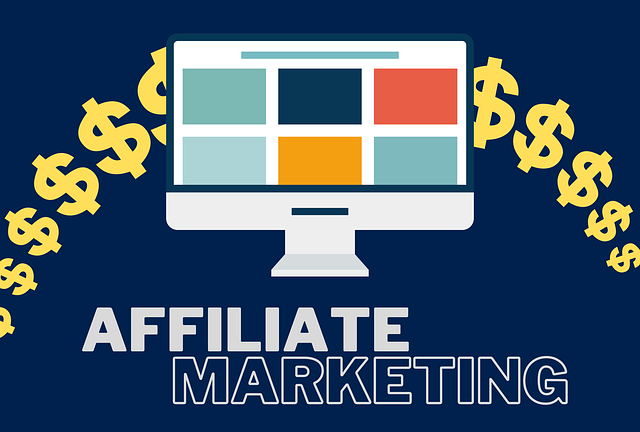The Money Is In The List
“The money is in the list”
is a popular phrase in the world of marketing and business. It refers to the idea that the key to making money lies in having a strong and engaged email list.
Having a large and responsive email list allows businesses to directly communicate with their audience and target customers. With a well-nurtured list, you can send promotional offers, new product announcements, and valuable content to their subscribers, ultimately leading to increased sales and revenue.
Building a quality email list requires various strategies such as opt-in forms on websites, social media lead generation campaigns, and incentivizing sign-ups. However, it is equally essential to focus on quality over quantity. A small, engaged list is often more valuable than a large, disinterested one.
To maximize the potential of their email lists, businesses need to prioritize building relationships with their subscribers. By providing them with valuable and relevant information, addressing their needs and concerns, and personalizing their email campaigns, companies can foster trust and loyalty among their audience. This, in turn, leads to higher open rates, click-through rates, and conversions.
As a seasoned marketer, I’ve come to realize the immense value of an email list.
Having a direct line of communication to your audience is vital in today’s digital landscape. In this piece, I want to share my insights and explore the reasons why building an email list is a game-changer for any business or individual looking to connect with their audience on a more personal level.
Why building an email list is important
An email list is a collection of email addresses that you have obtained, typically through a signup form, from people interested in your content, products, or services. It serves as a database for direct email marketing and communication.
Why is it important? Well, owning an email list means you don’t purely rely on the unpredictable nature of social media algorithms to reach your audience. You have a direct and reliable channel that is not dependent on third-party platforms. This autonomy ensures that your messages are delivered right to the inboxes of people who are already interested in what you offer, making it a powerful tool for driving engagement and conversions.
Email list Benefits
- Controlled Communication: You dictate when and how you communicate with your audience.
- Increased Engagement: Emails can be personalized, leading to higher engagement rates.
- Higher Conversion Rates: An engaged email list can lead to more consistent sales and sign-ups.
- Cost-Effectiveness: Sending emails is incredibly cost-effective compared to other marketing strategies.
- Better Analytics: Email platforms offer detailed analytics, allowing you to optimize your strategy based on actual data.
- Long-Term Relationships: With regular updates and valuable content, you nurture a long-term relationship with your audience.
So, I can assert that an email list is an indispensable asset for any market-savvy individual or business. It’s a reliable, personal, and strategic way to cultivate your brand and grow your base.
Creating an Effective Landing Page

Creating an effective landing page is critical to maximizing the value of any email list. It’s the front line where potential subscribers first interact with your brand, offering, or service. A well-crafted landing page can make the difference between a visitor bouncing away or becoming a loyal follower and customer.
Eye catching designs landing page
- Clear and concise headline: Immediately grabs the attention of the visitor and conveys the unique benefits or advantages.
- Visually appealing design: Use colors, images, and layout that align with your brand and are pleasing to the eye.
- User-friendly interface: Ensure the navigation is intuitive and the page loads quickly.
- Mobile optimization: With more users on mobile devices, make your page responsive and easily navigable on smaller screens.
- Testimonials or social proof: Build trust by including reviews, testimonials, or logos of well-known clients or partners.
Crafting a compelling call-to-action
- Visibility: Your CTA should stand out and be placed prominently on the page.
- Urgency: Use persuasive language to instill a feeling of urgency with the intention of compelling immediate action.
- Value proposition: Make it clear what the visitor will get by taking action – a free ebook, newsletter, or exclusive content.
- Minimal form fields: Request only the essential information to avoid discouraging sign-ups.
Best call to action phrases
1. “Grab your opportunity now!”
2. “Act fast and secure your spot!”
3. “Don’t delay, start today!”
4. “Join us and make a difference!”
5. “Experience the difference for yourself, sign up now!”
6. “Take the first step towards success, sign up today!”
7. “Unlock the potential within you, click here to start!”
8. “Don’t miss out on this exclusive offer, claim yours now!”
9. “Sign up now and start reaping the rewards!”
10. “Invest in yourself and achieve your goals, enroll today!”
11. “Become a part of our community, join us now!”
12. “Discover a world of possibilities, click here to get started!”
13. “Don’t wait for tomorrow, take action today!”
14. “Seize this opportunity now, before it’s too late!”
15. “Make the best decision of your life and click here to get started!”
to recapitulate , an effectively designed landing page with a compelling call-to-action is the linchpin of successful email list building. This approach can drastically improve your sign-up rates and be an influential driver of your marketing success.
Lead Magnet Ideas for Building Your List
In my experience, one of the staples of growing an email list is offering lead magnets that resonate with your audience. Lead magnets are incentives provided in exchange for contact information. Here are a few proven lead magnet ideas that have helped me build a robust and responsive list.
Ebooks and guides
- Comprehensive coverage: I often create in-depth ebooks or guides on topics my audience cares deeply about. This establishes me as an expert.
- Problem-solving content: My guides address common problems or questions, ensuring they are practical and valuable to my subscribers.
- Appealing design: A professionally designed cover and layout make my content more attractive, thus increasing the perceived value.
Checklists and cheat sheets
- Quick reference: These resources are popular because they provide concise, actionable information that my subscribers can use right away.
- Easy to digest: I make these checklists and cheat sheets straightforward and to the point, which enhances their utility.
- Highly shareable: Users often share these resources, indirectly helping to grow my list as more people get exposed to my brand.
to recap the key ideas, deploying the right lead magnets can be a game changer in list building. Not only do they help in capturing leads, but they also engage and provide real value to your audience. By utilizing ebooks, guides, checklists, and cheat sheets, I have witnessed significant growth in my subscriber base, and more importantly, in building a community of engaged users.
Opt-In Forms and Pop-ups
While lead magnets are crucial for building an email list, the strategy for presenting them to your audience is equally important. Opt-in forms and pop-ups are the mechanisms I use to deliver these magnets efficiently. Carefully crafting these elements ensures that my lead magnets are seen and utilized, ultimately growing my list effectively. Here’s how I optimize these important tools:
The strategic placement of opt-in forms on your website is important.
- High-traffic pages: I make sure to place opt-in forms on pages that receive the most visits to capitalize on existing website traffic.
- Relevant content: Positioning opt-in forms adjacent to content related to the lead magnet increases conversion rates, as there’s a stronger content-offer relevance.
- Minimal distractions: The opt-in forms have a clean design and a clear call-to-action (CTA) to minimize friction and encourage sign-ups.
Implementing Exit-Intent Pop-ups
- Timely reminders: Exit-intent pop-ups serve as last-minute reminders for visitors, offering them a valuable resource before they leave the site.
- Personalized offers: By customizing these pop-ups based on the content the visitor engaged with, I significantly increase the chances of conversion.
- A/B testing: I continuously test different designs and copy on these pop-ups to discover what resonates best with the audience and optimize accordingly.
In sum, the combination of strategic opt-in form placements and smartly triggered pop-ups has greatly augmented my list-building endeavors. They serve as a direct link between the value I offer and the audience I wish to engage, making the process of growing an email list both seamless and effective.

Effective Email Marketing Strategies
Aside from utilizing opt-in forms and pop-ups, I’ve developed a suite of strategies to enhance my email marketing efforts. These strategies help me deliver targeted content that resonates with my audience, driving engagement and conversion rates upwards.
Segmenting your email list
- Behavioral data: I segment my list based on user behavior, which includes past email engagement and website interactions, to send relevant content that aligns with their interests.
- Demographic information: I use demographic segmentation to ensure that my messaging is appropriate and tailored to specific groups within my audience.
- Customer journey stage: I recognize that different messages are needed at different stages of the customer journey, so I segment accordingly to nurture leads effectively.
Personalizing your email campaigns
- Dynamic content: I employ dynamic content that changes based on the recipient’s data, making each email feel specially crafted for them.
- Personal touches: Even simple personalization tactics like using the recipient’s name can boost open rates, so I make sure to incorporate these touches whenever possible.
- Timely follow-ups: Following up based on a user’s actions, such as a recent purchase or website visit, helps keep the conversation going and builds a stronger connection.
In these ways, I craft my email marketing to cater specifically to the needs and interests of my audience. By segmenting my list and personalizing my approaches, I cultivate better relationships with my subscribers and ultimately see a higher return on my email marketing investments.
How to Grow Email List
To successfully increase my email list, I’ve adopted several strategies. All of these are designed to appeal to potential subscribers, offering them genuine value in exchange for their email addresses. Growing a list is vital; after all, a larger audience means more opportunities to engage and convert.
Offering exclusive content or promotions
- Lead magnets: I create valuable content, such as ebooks, whitepapers, or webinars that are available only to subscribers. This incentivizes sign-ups as they’re exchanging their email for something tangible.
- Discounts and deals: I offer special promotions or discounts to new subscribers to encourage them to join my list. Who doesn’t love a good deal?
- Email-only offers: Providing offers that are exclusive to my email list creates a sense of exclusivity and can drive sign-ups.
Collaborating with other businesses for list building
- Joint ventures: Teaming up with other businesses for cross-promotion benefits both parties. Each of us gains exposure to the other’s audience.
- Referral programs: Encouraging current subscribers to refer others with incentives can be an effective way to grow the list organically.
- Giveaways and contests: Collaborative contests with attractive prizes can prompt sign-ups, as they require participants to provide their email addresses.
By offering exclusive content, special promotions, and leveraging partnerships, my email list has grown significantly. This expansion allows for greater distribution of my content and increased engagement from a broader audience base, which is ultimately aligned with my overall growth strategy.
Building Relationships with Subscribers
Integral to my strategy is not just growing my list but also nurturing it. That means having recurrent touchpoints with my audience and providing them with reasons to stay subscribed and engaged. Here’s how I focus on building lasting relationships with my subscribers:
Personalizing the subscriber experience
- Segmentation: I split my list into segments based on interests, demographics, or past interactions. This allows me to customize my content so it’s relevant to each group.
- Targeted emails: By using the information I have, I can send out emails that feel personal and timely. Content that specifically addresses the needs and interests of subscribers is more likely to capture their attention and provoke their involvement.
Delivering valuable content consistently
- Regular newsletters: I send out a newsletter with industry insights, tips, or updates. It keeps my audience informed and shows my ongoing commitment to their development.
- Quality over quantity: Every piece of content I share has to offer value. I always ask myself if what I’m sending will educate, inform, or entertain my subscribers.
Engaging with subscribers through email
- Interactive elements: Including polls, surveys, or calls-to-action can make my emails more engaging and provides me with valuable feedback.
- Responsive communication: I make it a point to reply promptly to subscriber emails. This demonstrates that I value their input and am interested in a two-way conversation.
By earnestly focusing on these areas, the relationships with my subscribers have deepened, trust has been built, and engagement has significantly improved. My email list is not just a collection of contacts; it’s a community that I am actively a part of, one that supports the growth of each member as much as my own goals.
Analyzing Your Email List Performance
To ensure the success of my email marketing efforts, I closely analyze how my emails perform. Performance metrics are my guiding stars that help tweak and refine my approach continuously. Below are critical components of my performance analysis strategy:

Monitoring the number of times emails are opened and the number of times recipients click on links
- Open rates: The percentage of subscribers who open my emails is a great indicator of how compelling my subject lines are. I aim for high open rates as they signify initial subscriber interest.
- Click-through rates: After getting them to open the email, the next step is to see how many are interacting with the content by clicking on links. Higher click-through rates mean the content resonated well and motivated actions.
Analyzing and improving the performance of your email campaigns using information and data.
- A/B testing: I employ A/B testing to compare different versions of my emails to see which performs better. This could be subject lines, images, or call-to-action buttons.
- Adapting content: Utilizing performance data, I refine my content strategy. If certain topics lead to higher engagement, I produce more content in that vein.
- Subscriber feedback: I pay close attention to feedback from my subscribers. If they suggest improvements or express particular interests, I adjust my content to align with their preferences.
Overall, by meticulously analyzing my email list performance, I am able to make informed decisions, cater more effectively to my subscribers’ needs, and enhance the overall effectiveness of my email marketing campaigns.
Conclusion
In summing up my approach to email list performance analysis, it’s clear that the strategies I implement have a direct impact on the success of my email marketing campaigns. Through diligent monitoring and optimization, I can see tangible improvements in engagement and conversion rates.
Recapping the importance of building an email list
- A robust email list forms the backbone of any successful email marketing strategy. It allows for direct communication with subscribers, fostering a sense of community and loyalty.
- Through my email list, I can deliver personalized content that resonates with my audience’s interests and needs, leading to higher engagement rates.
- An effective email list is a valuable asset that drives traffic, amplifies content reach, and ultimately boosts revenue.
Taking action to grow and nurture your list
- Growing the list: I actively seek new subscribers through various channels such as social media, website sign-up forms, and networking events.
- Nurturing the list: Once subscribers join my list, I work hard to maintain their interest. This involves sending regular updates, exclusive offers, and useful insights tailored to their preferences.
- Retention strategies: I employ strategies to keep my subscribers engaged and to prevent them from unsubscribing. This might include segmenting my list to ensure relevant content distribution or re-engagement campaigns for inactive subscribers.
By focusing on these key areas, I ensure that my email list remains a dynamic and evolving tool that contributes significantly to my overall marketing objectives.









